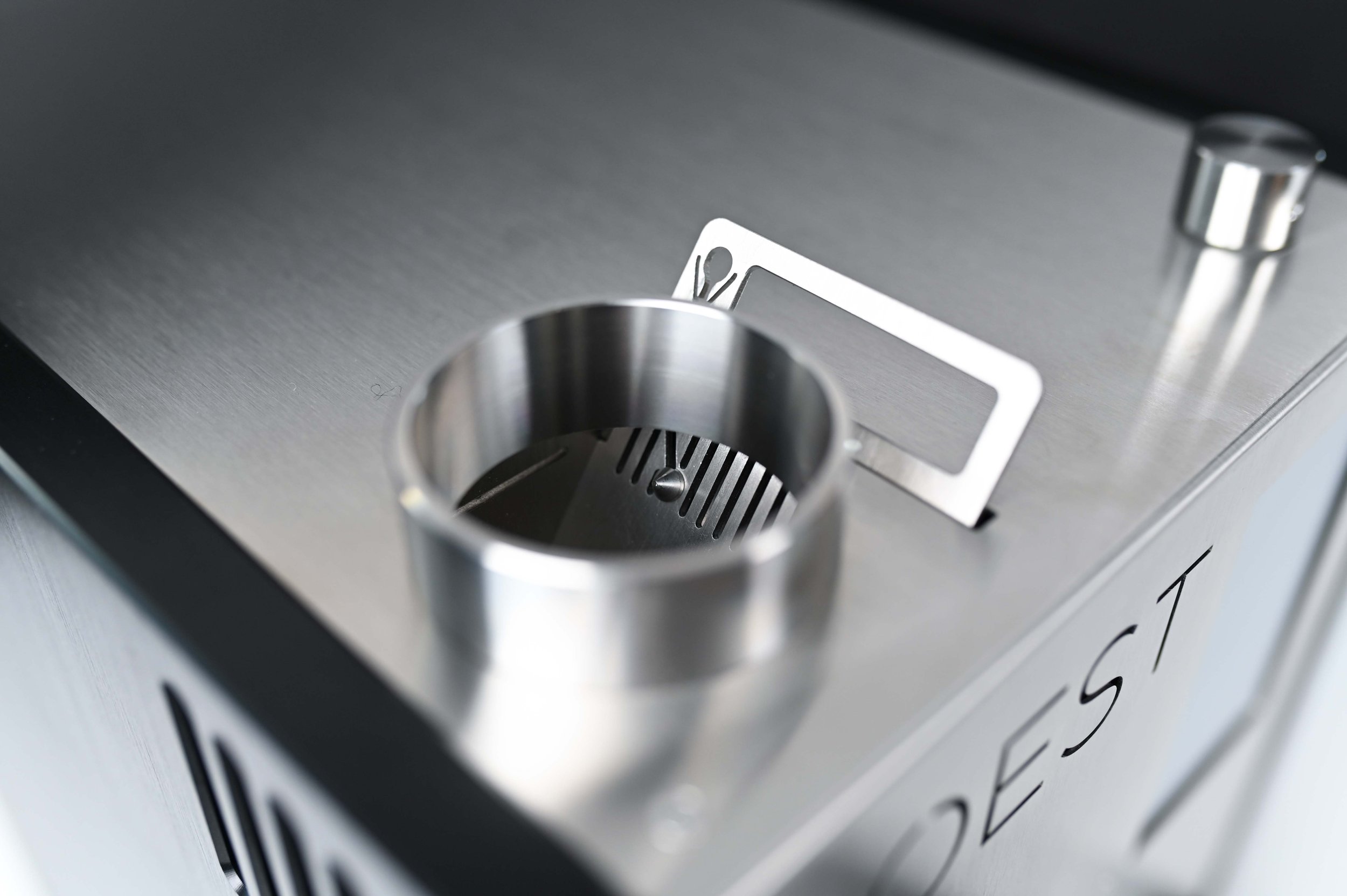Spring Cleaning your ROEST sample roaster
If you have room for one more New Year’s resolution, we have a suggestion to add to your list: perhaps it’s time to give your ROEST sampler roaster a bit of love. Like any coffee roaster, the ROEST needs a bit of maintenance from time to time to keep it in top condition. So, if your ROEST has worked hard for you all year, why not give it a spa day in return?
Aryan Aqajani, head of coffee at Zest Coffee in Melbourne, deep cleaning the chaff separator in his Roest. Photo courtesy of @julijanmarkovic_ and @brewmethods
Cleaning and maintenance may not be the most glamorous part of being a coffee roaster, but the good news is that the ROEST sample roaster is engineered to make it as easy as possible. From the ground up, the ROEST is designed to give you easy access — both for cleaning and maintenance, so that you can keep up with all the latest upgrades.
Demystifying Roest cleaning
The ROEST is a high-tech machine, so the prospect of opening it up for cleaning might seem intimidating. But with a bit of patience and the help of our step-by-step video guide, anyone can tackle it. And if you need any help or encouragement, our support team is always on hand.
Julie Baudet is Quality Control Coordinator at the specialty importer Falcon Coffees Europe, where she relies on the ROEST for roasting hundreds of samples every week. After completing 5000 batches last year, she contacted the ROEST support team for help with deep cleaning the machine.
At first, she was hesitant to open up her ROEST. “I was quite nervous to be getting into the machine to be honest,” Julie admits. “The process took me quite a long time as I was being cautious not to break anything, and I was also discovering the insides of the machine for the first time.”
But with a bit of help from us, she discovered that the process was simpler than she expected. So much so, she even posted a comic about the experience on Instagram!
Mission: possible. Comic by Julie Baudet (@moocreates_)
“I managed to undo each part and rebuild the machine and it still works!” she says proudly. “I realised the machine is quite sturdy so I am about to do another deep clean very soon and I am feeling more confident already and I am pretty sure it will take less time this time around.”
“The YouTube video that ROEST sent me to assist in the process was super helpful, and very well detailed,” she adds. “If you are unsure of what to do, the ROEST team is always very helpful and prompt to reply to issues. I managed to get someone on a video call once when I had an issue, and we solved it in a few minutes together!”
Not just for Christmas
If you already own a ROEST, hopefully you’re already giving it a quick brush-up at least once a week, following the maintenance guide on our website. But how do you know if it’s time for a deep clean?
Our advice is not to wait ‘til the holiday season! The amount of oil that builds up depends on the coffee you roast, and how dark you roast it, but we recommend a deep clean after a maximum of 1000–5000 batches. Of course, the more regularly you do it, the easier the job will be.
In fact, if you’ve never done it before, it is a good idea to go through the process at least once before the machine gets dirty, suggests coffee influencer Luca Costanzo (@lucacoffeenotes). “The nature of these things is that they are three times as long the first time you do them, then when you have learned where all the bits go and they are easy,” he says. “Have a go at the disassembly and reassembly early on when you get the machine, so you can learn how to do it with the fan assembly clear of roasting oils and such, which may make removal more difficult. This will make the subsequent actual cleaning much easier.”
After her experience deep cleaning the ROEST last year, Julie suggests that keeping to a regular cleaning schedule is the key to making the process as easy as possible. “When we opened our machine, the impellers were very dirty, there was lots of chaff and coffee oil build up all over the left hand side, and lots of dust on the right side,” she says. “I think doing a deep clean a little bit more often than the recommended milestone [of 5000 batches] is a good idea, just to keep on top of the build up.”
Harvey Scott, General Manager at Sheba Coffee in the UK, recently deep-cleaned his ROEST after 2,500 batches. “I wouldn’t want to leave it much longer,” he says. “We had a significant amount of coffee oil build up throughout the machine. For the regularity of deep cleaning, I think [2,500 batches] was about right.”
Good as new: Sheba Coffee’s ROEST all cleaned up and ready for reassembly. Photo courtesy of Harvey Scott (@sheba.coffee)
Like Julie, Harvey found the cleaning process easier than he expected. “It was actually quite enjoyable. Although opening the machine for the first time can be daunting, the video guide was easy to follow and I enjoyed gaining a better understanding of how the machine worked,” he says.
“If you’re worried about opening it up, I always find the ROEST support team very helpful for answering any questions,” he adds.
A machine for life
Right from the beginning, ROEST’s design philosophy has been that our machines should always be user-repairable and upgradable. This ‘Design to Repair’ approach ensures that your ROEST will never become obsolete. Instead of buying the latest model every few years and consigning the old machine to landfill, we believe you should be able to keep using the latest technology, no matter how long ago you bought your machine.
We carefully design new features, such as the inlet temperature sensor and the first crack detection card, so that you can upgrade your machine to the latest specifications yourself. But more than that, we’re always looking for ways to make it even easier to clean and maintain the machine, whether that’s by improving our online guides, or refining the design of the roaster.
The latest example of this is the new charge handle, which has just been redesigned to make everyday cleaning of the machine even easier. The addition of a small moveable catch means that you can now access the exhaust without opening the top plate — a small change designed to make our customers’ lives a little easier. And of course, this feature can be easily installed to all of our existing roasters if you want to upgrade yours.
Incremental gains: the moveable catch on the new charge handle means it can be easily removed for daily cleaning
A helping hand
If you want to try something out, need help with any part of the process, or have suggestions for improvements, we’re always happy to hear from you — we’re just an email away. We’re proud to see our customers taking such great care of their machines, and coming up with ingenious ways to make the process easier.
A neat tip from a customer: José Alejandro (@joalherb), founder of the Surcafest coffee festival in Colombia, pre-loaded his cable ties before cutting the old ones when replacing an LED, to ensure that each one was in its right place.
Of course, if you don’t want to tackle the cleaning yourself, you can always send your machine back to us for a full refurb instead. We can strip it down, clean it up, and even upgrade your ROEST to include all the latest features. Just contact support to get a quote for your machine, and soon enough, your machine will be just like new.
Whether you enjoy the satisfaction of cleaning your machine yourself, or you prefer to let us handle it, make time for maintenance sooner rather than later. Only a clean roaster can give you clean coffee — and a regular maintenance schedule makes the process so much easier. As Julie puts it: “Trust yourself, and do it if you feel your machine needs it; it is better to be cleaner than not!”





